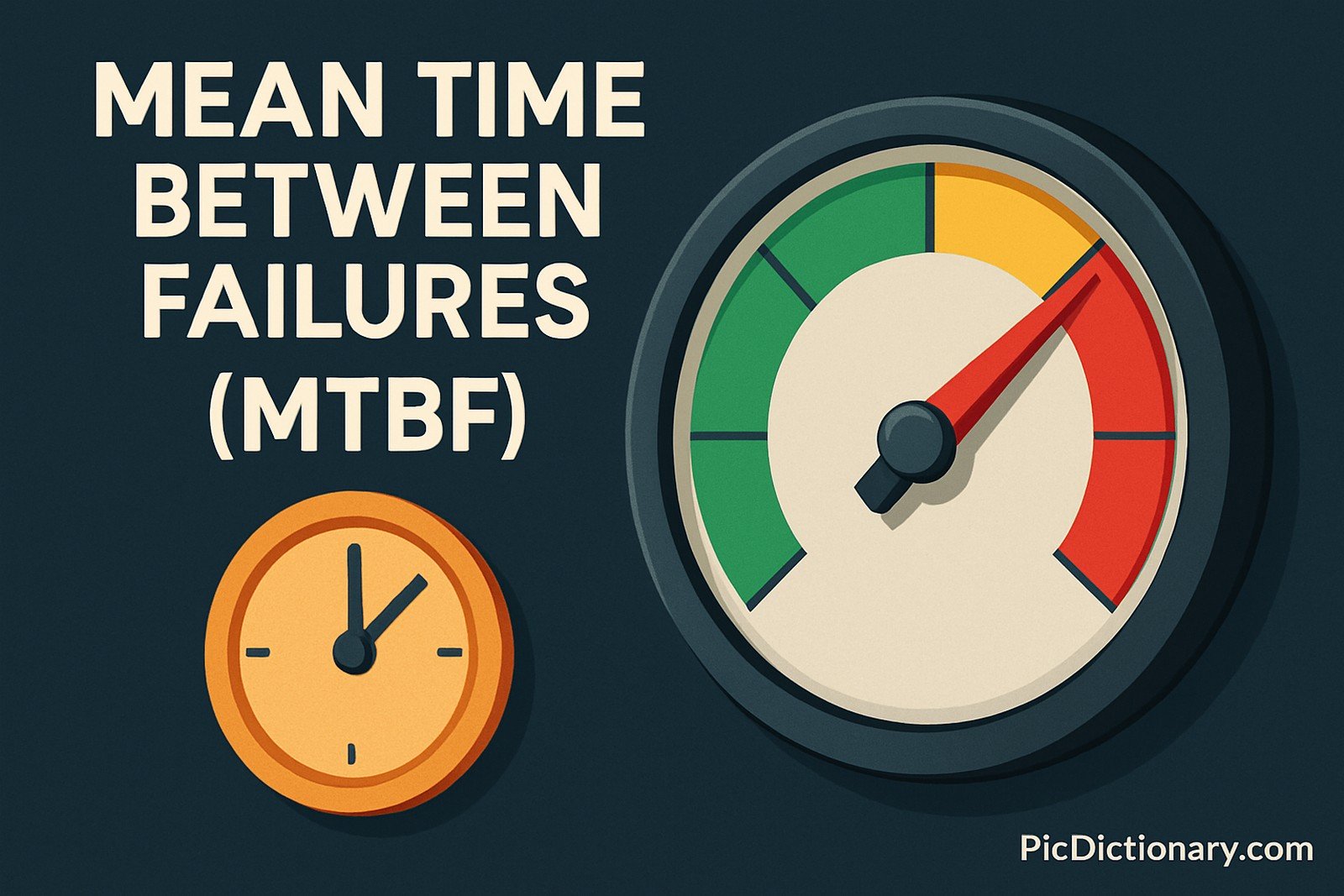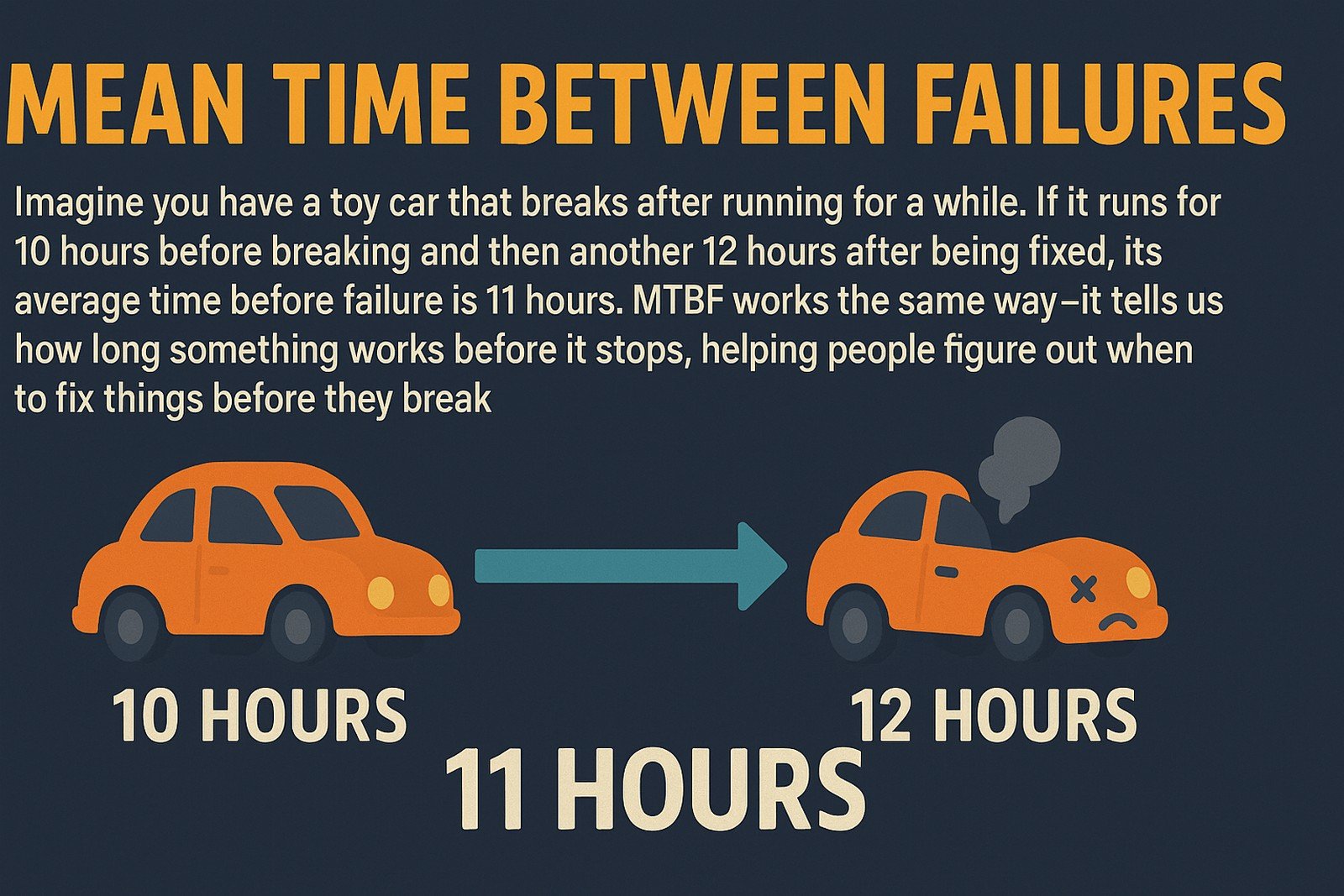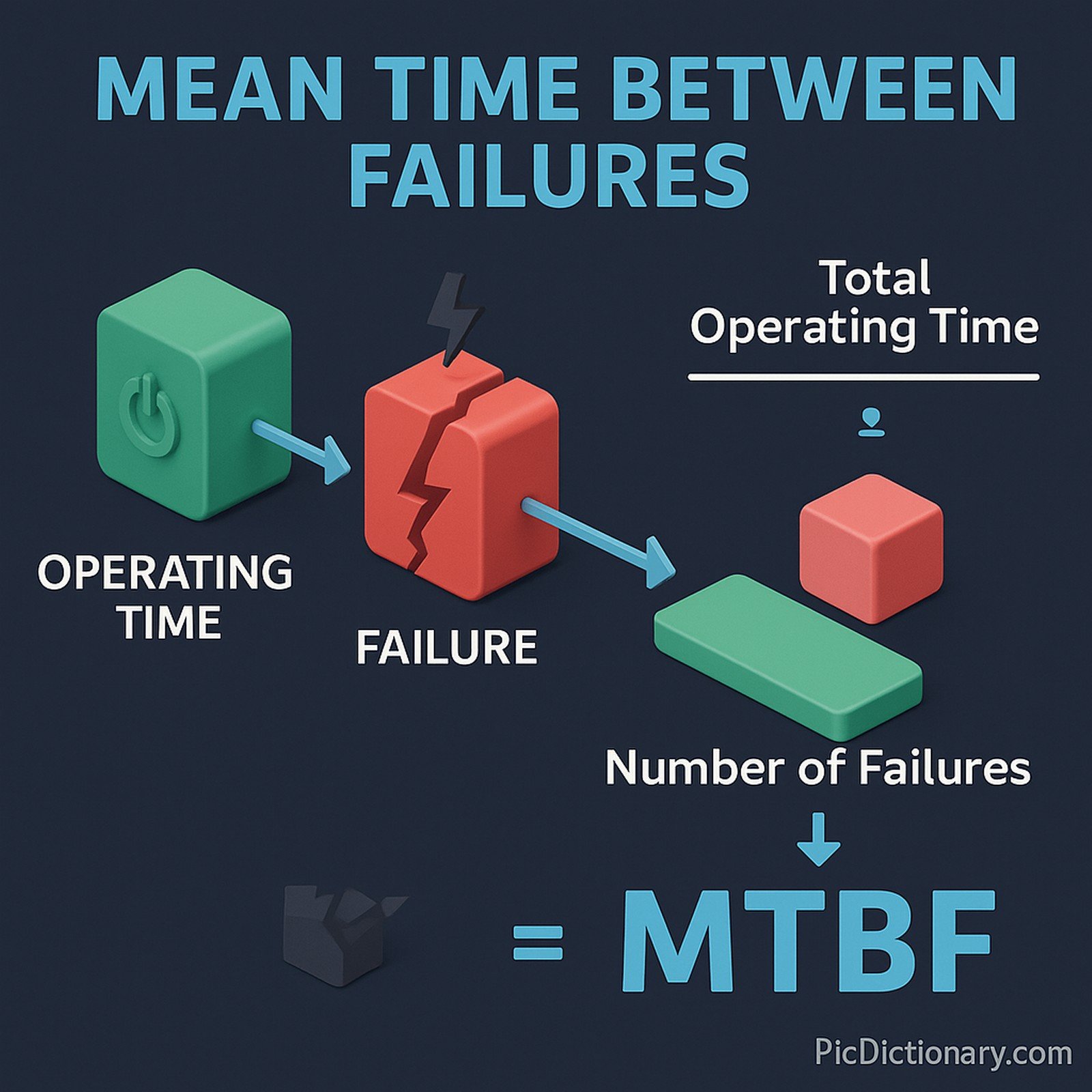Mean Time Between Failures (MTBF)

Quick Navigation:
- Mean Time Between Failures (MTBF) Definition
- Mean Time Between Failures (MTBF) Explained Easy
- Mean Time Between Failures (MTBF) Origin
- Mean Time Between Failures (MTBF) Etymology
- Mean Time Between Failures (MTBF) Usage Trends
- Mean Time Between Failures (MTBF) Usage
- Mean Time Between Failures (MTBF) Examples in Context
- Mean Time Between Failures (MTBF) FAQ
- Mean Time Between Failures (MTBF) Related Words
Mean Time Between Failures (MTBF) Definition
Mean Time Between Failures (MTBF) is a key reliability metric in engineering that quantifies the average operational time between failures of a system or component. It is widely used in hardware and software reliability analysis to estimate performance and plan maintenance. MTBF is calculated as the total operational time divided by the number of failures, helping engineers predict system uptime and design more robust systems.
Mean Time Between Failures (MTBF) Explained Easy
Imagine you have a toy car that breaks after running for a while. If it runs for 10 hours before breaking and then another 12 hours after being fixed, its average time before failure is 11 hours. MTBF works the same way—it tells us how long something works before it stops, helping people figure out when to fix things before they break.
Mean Time Between Failures (MTBF) Origin
The concept of MTBF emerged in the mid-20th century as part of reliability engineering. It became crucial in military and aerospace industries to enhance equipment durability and minimize failures. Over time, it expanded into various fields, including software development and IT infrastructure.
Mean Time Between Failures (MTBF) Etymology
The term "Mean Time Between Failures" is derived from statistical reliability analysis, where "mean" refers to the average, "time" to operational duration, "between" to the interval separating failures, and "failures" to system breakdowns.
Mean Time Between Failures (MTBF) Usage Trends
MTBF is widely used in industries requiring high reliability, such as aerospace, automotive, and IT. With the rise of cloud computing and data centers, MTBF now plays a crucial role in software and hardware maintenance planning. Organizations aim for higher MTBF values to reduce downtime and improve service quality.
Mean Time Between Failures (MTBF) Usage
- Formal/Technical Tagging:
- Reliability Engineering
- System Availability
- Predictive Maintenance - Typical Collocations:
- "high MTBF value"
- "MTBF calculation"
- "improving MTBF"
- "MTBF and failure rate"
Mean Time Between Failures (MTBF) Examples in Context
- A data center uses MTBF calculations to determine when to replace critical server components before failure occurs.
- In the aerospace industry, MTBF is used to ensure that aircraft components meet safety and reliability standards.
- Software engineers track MTBF to measure how often a program crashes under normal usage.
Mean Time Between Failures (MTBF) FAQ
- What is MTBF used for?
MTBF helps predict the reliability of systems and schedule preventive maintenance to minimize failures. - How is MTBF calculated?
MTBF is calculated as the total operational time divided by the number of failures during that period. - Does a higher MTBF mean better reliability?
Yes, a higher MTBF indicates a longer time between failures, suggesting better reliability. - Can MTBF be applied to software?
Yes, software reliability metrics often use MTBF to estimate system stability and failure rates. - How is MTBF different from MTTF?
MTTF (Mean Time to Failure) applies to non-repairable systems, whereas MTBF is for repairable systems. - Is MTBF always accurate?
MTBF is an estimate and depends on historical data; actual results may vary due to unforeseen failures. - How does MTBF affect maintenance schedules?
MTBF helps set maintenance intervals, reducing unexpected failures and downtime. - What industries rely on MTBF the most?
Industries like aerospace, manufacturing, IT, and telecommunications rely heavily on MTBF for reliability planning. - Can MTBF predict when a failure will occur?
No, MTBF provides an average failure interval but does not predict specific failure times. - What factors influence MTBF?
Factors like design quality, environmental conditions, and maintenance practices impact MTBF.

Mean Time Between Failures (MTBF) Related Words
- Categories/Topics:
- Reliability Engineering
- Predictive Maintenance
- Failure Analysis
Did you know?
NASA uses MTBF to assess the reliability of spacecraft components, ensuring that critical systems remain operational for extended space missions. This calculation helps engineers plan redundancy and maintenance strategies for long-duration missions.
PicDictionary.com is an online dictionary in pictures. If you have questions or suggestions, please reach out to us on WhatsApp or Twitter.Authors | Arjun Vishnu | @ArjunAndVishnu

I am Vishnu. I like AI, Linux, Single Board Computers, and Cloud Computing. I create the web & video content, and I also write for popular websites.
My younger brother, Arjun handles image & video editing. Together, we run a YouTube Channel that's focused on reviewing gadgets and explaining technology.



Comments powered by CComment